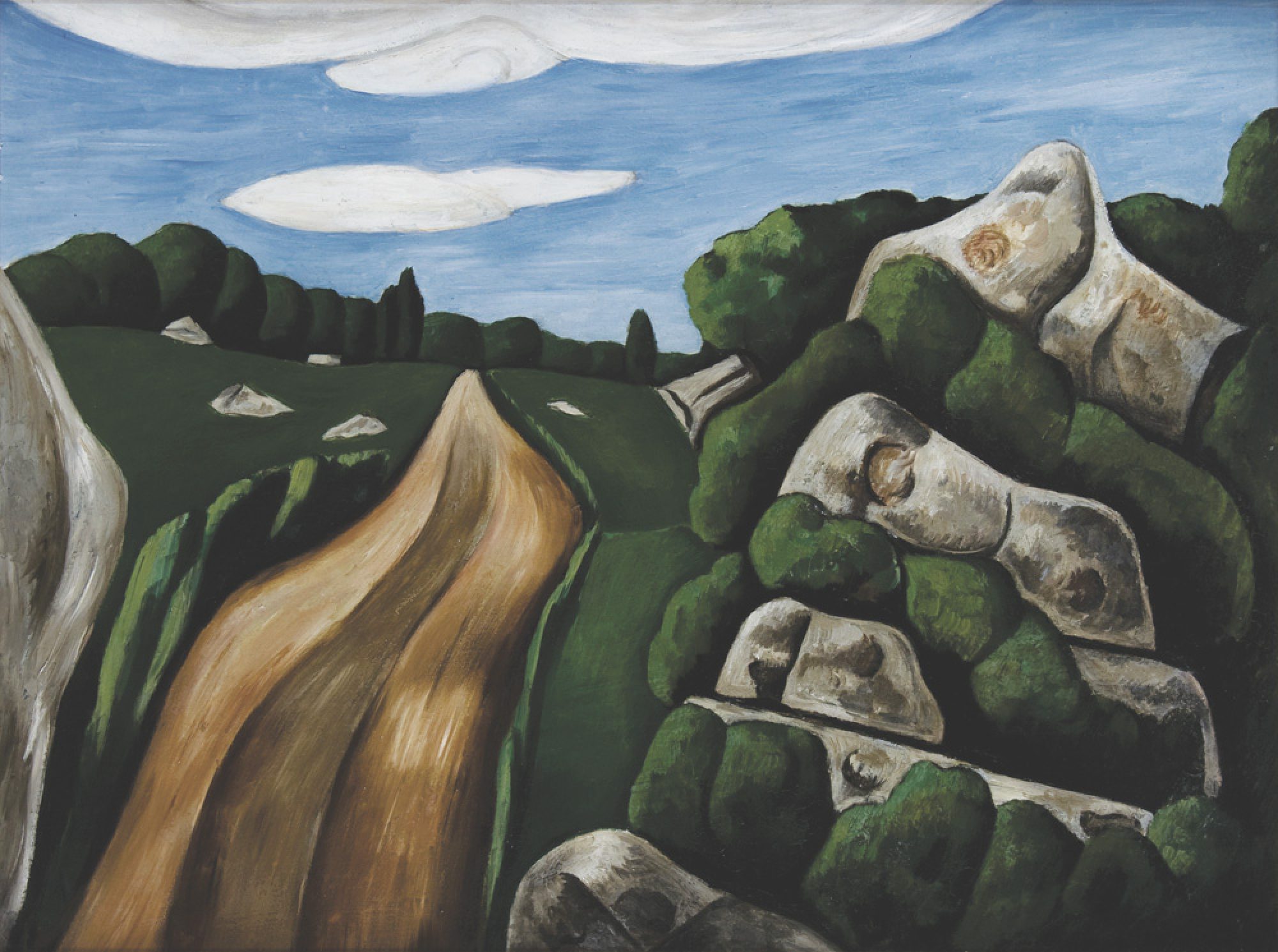Trail Site #4 : 9 Rocky Neck Avenue
DIRECTIONS: From the Eastern Point Guest House, walk toward the parking lot on Rocky Neck Avenue. Marsden Hartley’s former studio was in the house at #9 on the right just before the parking lot..
“I go every day to ‘Dogtown’…. and a very strange stretch of landscape it is.”
“…the place is forsaken and majestically lovely as if nature had at last formed one spot where she can live for herself alone.” — Marsden Hartley

Marsden Hartley (1877–1943) settled in to live with the Wilkens family at 9 Rocky Neck Avenue in September of 1931. He had arrived in Gloucester about two months earlier in the third week of July, staying at the boarding house at 1 Eastern Point Road, just yards away and catty-cornered across the street. He had decided to come back to Gloucester, first visited in 1920, as a tune-up for a planned Guggenheim grant-supported trip to Mexico. Choosing Gloucester specifically because he remembered the landscape of Dogtown, an eerie tract of glacial moraine, juniper, and scrub lying in the middle of Cape Ann beyond the town, he had started five paintings of Dogtown by mid-August.
Content with his accommodations at the 9 Rocky Neck Avenue home of local postman Wilkens, Hartley was happily using the closed-in sunroom at the back of the house, which faced Smith’s Cove, to read, write and paint in the mornings throughout the glorious fall weather of 1931, which lasted until his return to New York in the first week of December.

Hartley’s place in the annals of American art history — as a member of noted New York dealer Alfred Steiglitz’ circle of artists — was secure on the strength of the boldly colorful paintings of American Indian and German military subjects done in Paris and Berlin between 1911 and 1916. However, the Dogtown landscape, which he returned to paint in 1934 (again staying with the Wilkenses), and again from memory in 1935 and 36, proved the catalyst and stepping-off point for Hartley’s last great creative period. These bold landscapes and genre paintings, celebrating his native New England and its northern coast and people, would rival in power his German paintings of twenty-five years before and ensure his reputation as one of the greats of American Modernism.

